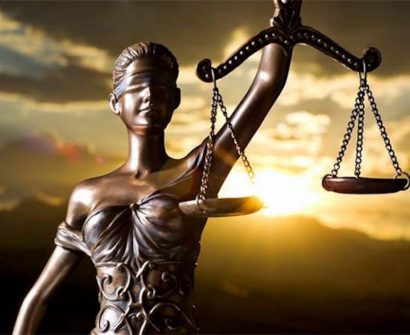
The Supreme Court’s five-judge bench, which included Justices Y.C. Chandrachud, A. Gupta, N. Untwalia, P.N. Bhagwati, and R. Sarkaria, decided this historic case. In this case, the Supreme Court established the “rarest of the rare” concept, which put major restrictions on the death penalty.
The Supreme Court holds that opposition to taking a life through the use of the legal system is necessary if one has a true and persistent respect for the dignity of human life. That could only be done in extremely rare situations where the other viewpoint is obviously foreclosed.
bachan singh vs state of Punjab Case Facts
- A Punjab farmer Bachan Singh was charged with killing Darshan Singh and Basant Singh in 1979 after a disagreement over crop watering.
- He was given the death punishment after being found guilty under section 302 of the indian penal code.
- His appeals to the Punjab and Haryana High Courts were denied. Bachan Singh then petitioned the Supreme Court, claiming that article 21 of the indian constitution rendered the death punishment illegal.
- A five-judge Supreme Court panel established the “rarest of the rare” standard in 1983 when upholding the constitutionality of the death penalty. The goal of this guideline was to identify the extraordinary situations that warrant the death penalty.
- The court remitted Bachan Singh’s sentence to life in prison while maintaining the legitimacy of the death penalty, highlighting the need for cautious deliberation in capital punishment cases.
- The use of the death penalty in India was greatly impacted by this historic ruling, which established a standard for determining the seriousness of an offense before applying the worst punishment.
bachan singh vs state of Punjab Issues
- Is it unconstitutional to execute someone for murder under section 302 of the indian penal code?
- Is the sentencing procedure described in section 354 (3) of the Criminal Procedure Code of 1973 unlawful since it gives judges unchecked discretion if the prior question is answered in the negative and permits the death penalty to be arbitrarily imposed on a person found guilty of murder, a crime for which the maximum penalty under the Indian Penal Code is life imprisonment or death?
- Would the facts discovered by the subordinate courts be deemed a “special reason” to impose the death punishment as stipulated by section 354 (3) of the crpc?
Contentions by the Parties
Petitioner:
- Deterrence: In order to stop others from committing the same crimes, the death penalty serves as a deterrent.
- Justice and revenge: The public’s demand for justice and retribution must be met by the death penalty.
- Rehabilitation: The death penalty was the only fitting punishment for Bachan Singh’s actions because he was beyond rehabilitation.
- Society’s protection: In order to keep Bachan Singh, a threat to society, at bay, the death penalty was required.
Respondent:
- Unconstitutional: According to article 21 of the indian constitution, the right to life and personal liberty are violated by the death penalty, making it unconstitutional.
- Randomness: The death penalty is a discriminatory and arbitrary punishment that has been disproportionately used on the underprivileged and disenfranchised.
- Inhumane: The death penalty breaches the accused person’s basic rights and is an inhumane and harsh form of punishment.
- Reform Potential: Bachan Singh was rehabilitable and reformable, and the death penalty was not required to safeguard society.
bachan singh vs state of Punjab Judgment
- Constitutional Validity of the death penalty: section 302 of the indian penal code (IPC) contains the death punishment. This was the main question that the Supreme Court had to decide. The court considered whether article 21 of the indian constitution, right to life was violated by the application of the death penalty.
- Deterrence vs. Retribution: The court deliberated on the opposing ideas of retribution and deterrence with respect to the intent behind the death penalty. It acknowledged that whereas some consider the death penalty to be a deterrent, others perceive it as a form of vengeance reserved for the worst crimes.
- Guiding concepts for the application of the death penalty: The death sentence should only be applied in the most extreme circumstances, such as when the crime is incredibly severe and life in prison would not be a sufficient alternative punishment, according to the “rarest of the rare” theory established by the court.
- Aggravating and Combating Circumstances: The court made it clear how crucial it is to take both into account when determining a person’s sentence in death penalty cases. The severity of the crime may be considered an aggravating element, but the accused’s age, upbringing, and absence of a past criminal history may be considered mitigating considerations.
- Court Discretion: The court stressed that while choosing between the death penalty and life in prison, the sentencing authority should use its discretion carefully.
- Examine of Death Sentence: The court made it clear that, in order to make sure that the death penalty is not applied arbitrarily, the Supreme Court and the High Court should examine every death sentence.
An important ruling in the history of the Indian legal system was the Bachan Singh v. State of Punjab case, which set rules for the application of the death penalty. The ruling established the idea of the “rarest of rare” cases as a standard for determining when the death penalty should be applied. It also acknowledged the significance of tailored sentencing and the requirement to take the offender’s circumstances into account when imposing a punishment.
With the goal of giving students the best coaching available for law entrance exams including the CLAT, AILET, and various other numerous state judiciary exams, Jyoti Judiciary Coaching, India’s Finest educational Platform, was established. Come enrol now with Jyoti Judiciary!
For any latest news, legal topics, judiciary exams notifications, patterns, etc watch Jyoti Judiciary’s YouTube channel for legal videos for any updates at https://youtube.com/@jyotijudiciarycoaching4852?si=2cwubh9d2A9urwJf









